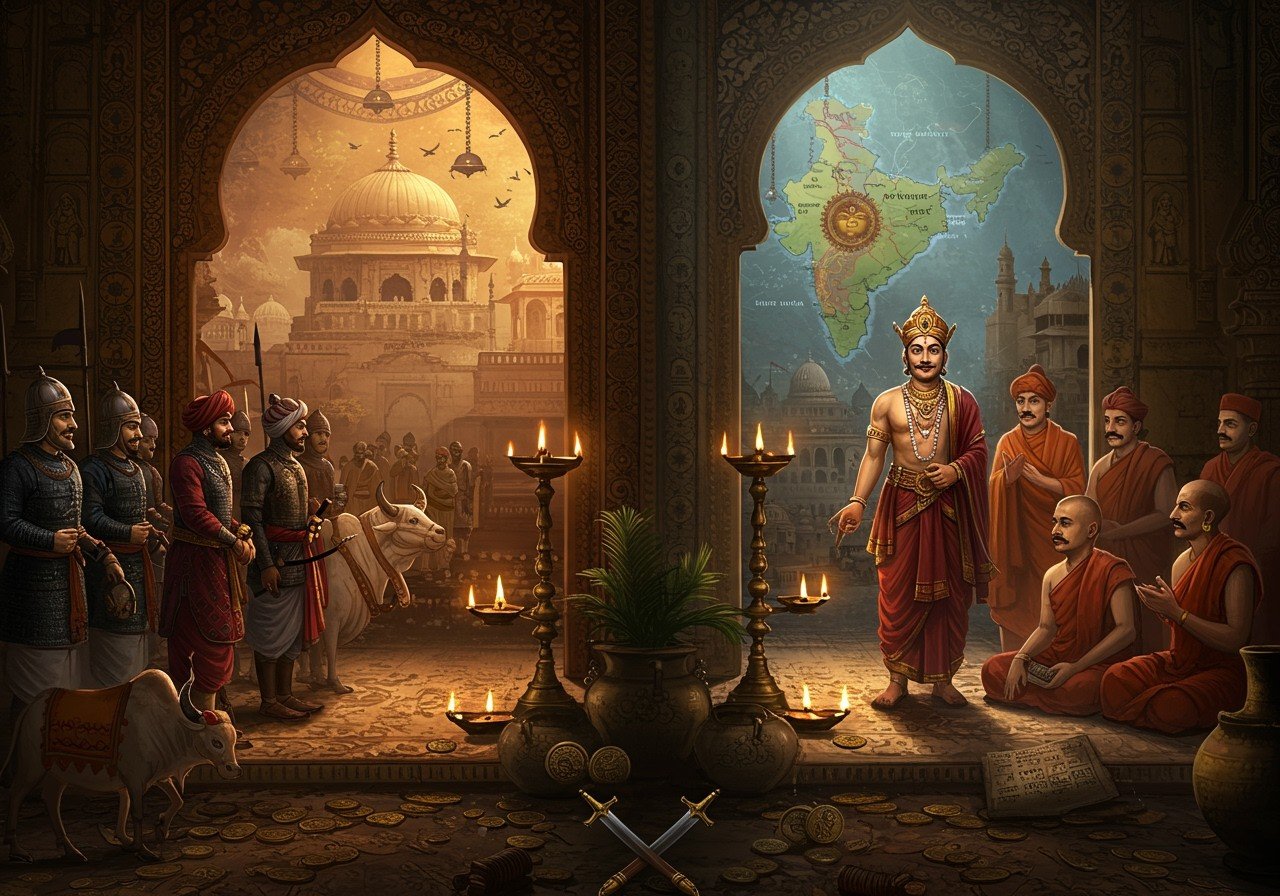
India’s rich history is replete with dynasties that have shaped its cultural and political landscape. The Maukhari and Pushyabhuti dynasties were two such influential powers in northern India during the early medieval period. Understanding their rise, reign, and eventual decline offers valuable insights into the traditions and historical authenticity of ancient India.
Overview of the Maukhari Dynasty
The Maukhari dynasty thrived in the 6th and 7th centuries CE, originating from the region around Kanyakubja (modern Kannauj). Notable rulers such as Ishanavarman and Sarvavarman expanded the dynasty’s influence across the Gangetic plains. Their administrative structure and military prowess contributed significantly to the stability and growth of their kingdom. The Maukharis, initially vassals to the Guptas, established their independence in the mid-6th century and controlled Uttar Pradesh and Magadha for over six generations. They were known for cultural and architectural achievements, including temple construction and the promotion of various art forms. Internal strife and external pressures eventually led to their decline.
Overview of the Pushyabhuti Dynasty
The Pushyabhuti dynasty, also known as the Vardhana dynasty, emerged in the 6th century CE, with its roots in Thanesar (present-day Haryana). Key rulers like Prabhakaravardhana and his son, the renowned Harshavardhana, expanded the empire significantly. Harsha, ruling from 606 to 647 CE, implemented administrative reforms that further strengthened governance and unified much of north and north-western India. This dynasty made substantial contributions to culture, religion, and education, notably through the patronage of Buddhism and the establishment of universities like Nalanda. The death of Harsha without an heir led to succession disputes and ultimately contributed to the dynasty’s decline.
Comparative Analysis: Political and Military Aspects
Both dynasties implemented centralized power structures but with distinct governance approaches. Their military campaigns, led by ambitious rulers, resulted in territorial expansion. They actively engaged in diplomacy, forming alliances and engaging in conflicts with contemporary dynasties. Military innovations were significant, with both cavalry and infantry playing crucial roles. Defensive measures and fortifications were integral to protecting their realms.
Comparative Analysis: Cultural and Religious Contributions
Both the Maukhari and Pushyabhuti dynasties were patrons of art, literature, and architecture. They commissioned the construction of significant temples and religious monuments. A range of religious practices, including Hinduism, Buddhism, and Jainism, flourished under their rule. Royal patronage significantly influenced regional art forms and educational institutions. Cultural exchanges with neighboring regions further enriched their contributions.
Legacy and Influence
The Maukhari and Pushyabhuti dynasties left enduring legacies in northern India. Their administrative reforms influenced later kingdoms and empires. Their cultural and architectural contributions continued to resonate throughout the region. Historical records and archaeological findings serve to preserve their memory. These dynasties played a vital role in shaping regional identity and historical consciousness.
Poojn.in: Connecting You with India’s Rich Heritage
At Poojn.in, we offer a wide selection of products that connect you with India’s rich spiritual and cultural heritage. Explore our collection of authentic puja items, handcrafted by skilled artisans using traditional techniques. We offer everything you need to create a sacred space in your home and honor the traditions of ancient India.
Featured Products:
- Pure Cotton Pooja Asan: Create a dedicated space for your daily rituals with our vibrant and comfortable asans.
- Hand-Crafted Marble Dust Murtis: Bring divine presence into your home with our beautifully crafted murtis of various deities.
- 100% Pure Ashoka Chal Powder: Experience the purity and authenticity of traditional puja ingredients sourced directly from nature.
Visit www.poojn.in today to discover more and enrich your spiritual journey.
FAQs on Maukhari and Pushyabhuti Dynasties
What distinguished the Maukhari and Pushyabhuti dynasties’ approaches to governance, despite both centralizing power? Both dynasties centralized authority, but their governance models differed. The Maukharis focused on consolidating their control over the Gangetic plains, while the Pushyabhuti dynasty, especially under Harsha, adopted a more expansive approach, aiming to unify a larger portion of northern India through military campaigns and strategic alliances.
How did the religious patronage of the Maukhari and Pushyabhuti dynasties differ, despite both supporting multiple faiths? While both dynasties patronized Hinduism, Buddhism, and Jainism, their focuses varied. The Maukharis leaned towards traditional Brahmanical Hinduism, evidenced by their temple constructions and land grants to Brahmins. The Pushyabhuti dynasty, particularly under Harsha’s influence, showed a strong inclination towards Mahayana Buddhism, organizing grand assemblies and supporting monasteries like Nalanda.
Kandariya Mahadeva Temple
Sun Temple, Modhera


